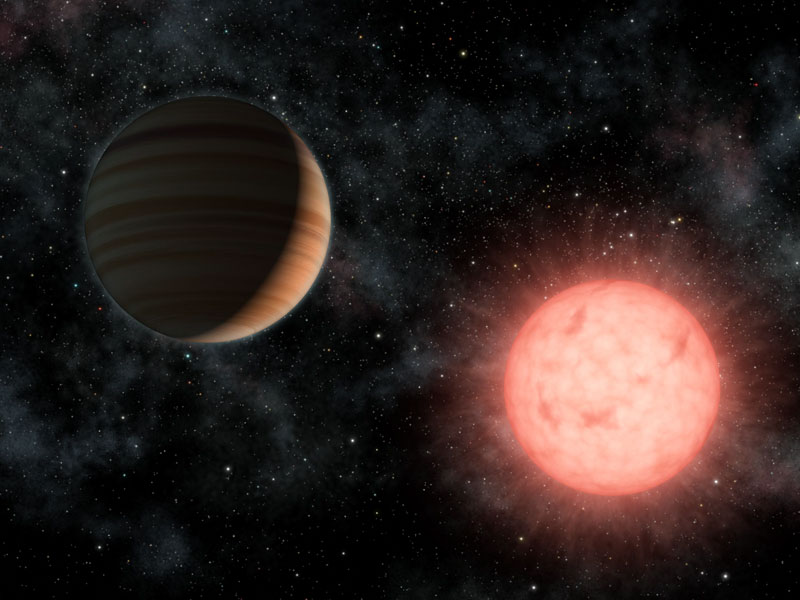
|
Credit: JPL-Caltech,
NASA
Explanation:
Can a planet be as large as the star that it orbits?
Recent observations have discovered that nearby
Van Biesbroeck's star
might have just such a large planet.
Although VB 10 lies only about 20
light years away, it is a small
red dwarf star so dim,
at 17th magnitude, that a telescope is needed to see it.
Van Biesbroeck's star
was previously known for its rapid
proper motion
across the sky -- it moves so fast it could cross a
full moon in only about 1,000 years.
By noting a wiggle
in VB 10's sky trajectory,
astronomers were able to infer the existence of a
planet several times the mass of
Jupiter.
Although the star VB 10 is perhaps 10 times more massive than the discovered planet
VB 10b,
the star is likely more highly compressed and so the two might be closely matched
in size.
Such a system is
envisioned above
with an artist's illustration.
Since faint M-type stars like VB 10 are so common,
planetary systems surrounding
them, including planets larger than their parent star,
might be more common than planetary systems like our own
Solar System.
Free Lecture:
An APOD editor will review great space images this Friday in Kalamazoo, Michigan.
|
January February March April May June July August September October November |
| ||||||||||||||||||||||||||||||||||||||||||||||||
NASA Web Site Statements, Warnings, and Disclaimers
NASA Official: Jay Norris. Specific rights apply.
A service of: LHEA at NASA / GSFC
& Michigan Tech. U.
Based on Astronomy Picture
Of the Day
Publications with keywords: planetary system - extrasolar planet - red dwarf
Publications with words: planetary system - extrasolar planet - red dwarf
See also:
